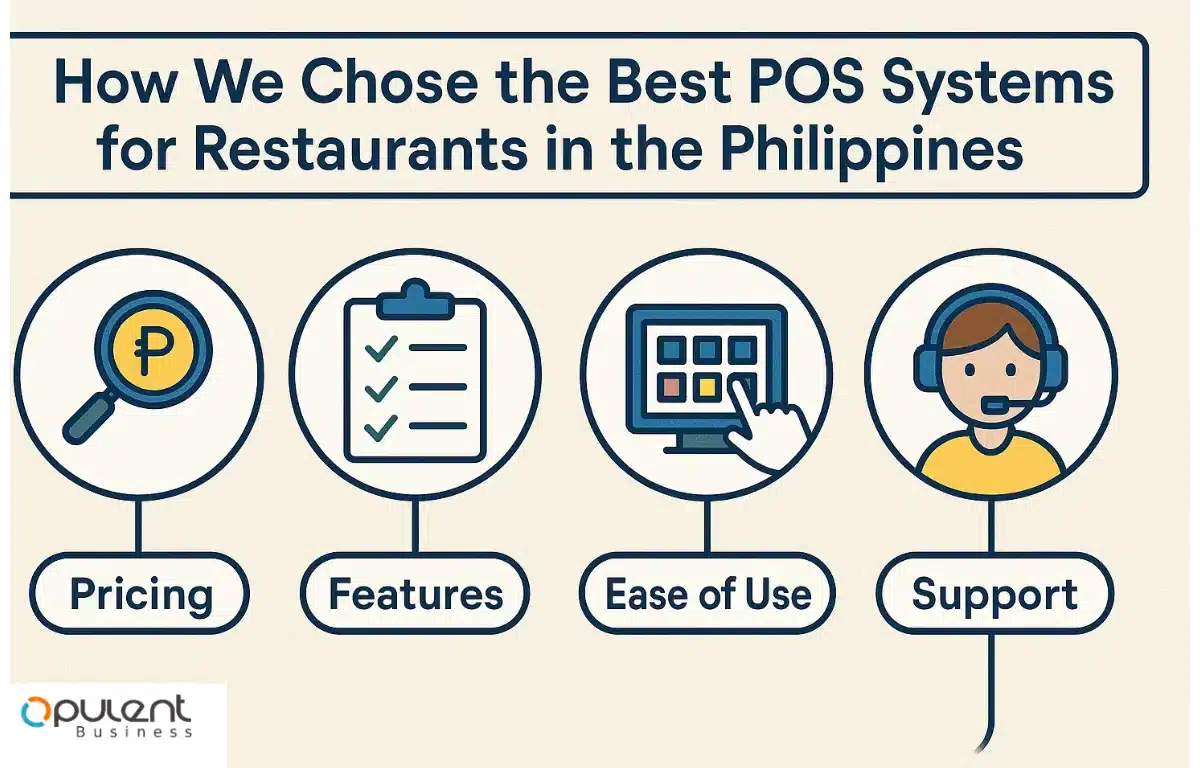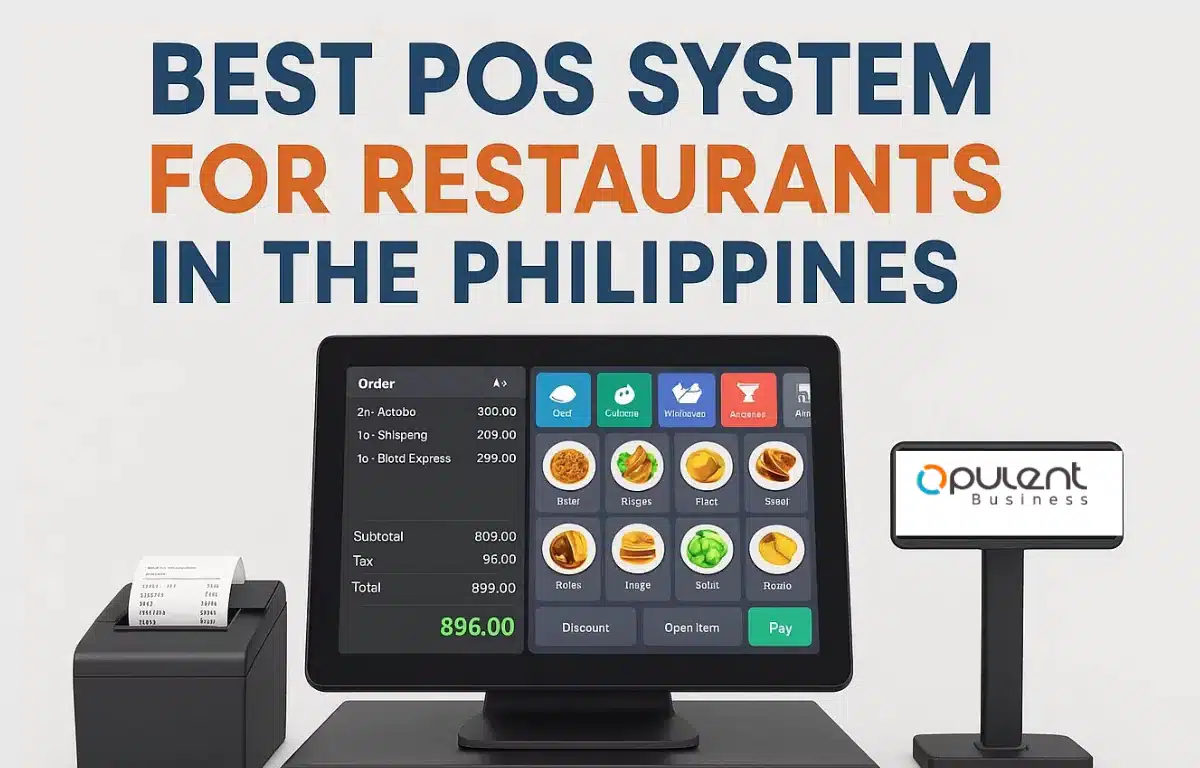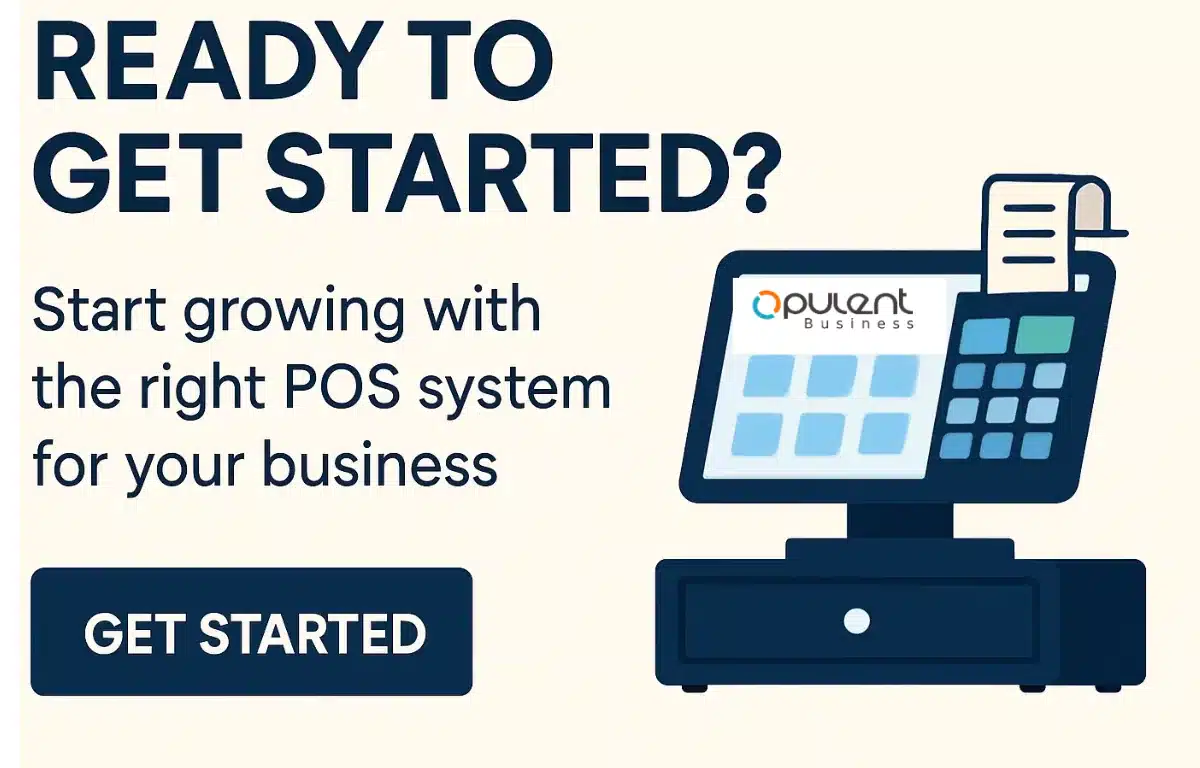Running a restaurant today is more than just serving great food. From juggling dine-in, takeout, and delivery orders to keeping track of inventory and managing staff, smooth operations are key to success. This is where the right POS system becomes a game-changer.
A smart POS doesn’t just process payments—it streamlines daily operations, automates repetitive tasks, and minimizes costly errors. Whether you run a cozy carinderia or a bustling bistro in Makati, features like real-time sales tracking, low-stock alerts, and seamless delivery app integration mean faster service and happier customers.
Even better, built-in analytics turn raw data into actionable insights. Restaurant owners can easily see which dishes sell best, when to restock, and how to optimize margins—transforming everyday transactions into long-term business growth.
What is a POS System?
A Point-of-Sale (POS) system is the digital backbone of a modern restaurant. Far beyond a traditional cash register, a POS handles the entire transaction journey from placing an order to collecting payment while seamlessly managing operations in the background.
For restaurants in the Philippines, where customer expectations, delivery demands, and multi-branch operations are rising, the right POS system helps streamline daily tasks and improve service quality.
Core Components of a POS System
- Hardware
- POS Terminal/Tablet: The touchscreen interface used to take and process orders
- Receipt Printer: Prints out transaction receipts for customers
- Barcode Scanner: Useful for scanning packaged items or loyalty cards
- Cash Drawer: For handling cash payments securely
- Software
Beyond simplifying daily operations, a smart restaurant POS system comes packed with powerful POS software features designed to boost efficiency and profitability:
- Sales Tracking: Real-time recording and analysis of all sales
- Menu Management: Easily update menu items, prices, and combos
- Inventory Management: Tracks stock levels and usage patterns to avoid overstocking or shortages
- Customer Relationship Management (CRM): Stores customer data, preferences, and order history
- Reporting & Analytics: Generates insights on best-selling items, peak hours, and staff performance
- Advanced Features
- Cloud-Based Access: Manage your restaurant remotely with real-time syncing with combining your POS system with Cloud Based accounting
- User Permissions: Assign roles and restrict access based on employee levels
- Integration with Third-Party Apps: Connects to delivery platforms like GrabFood or Foodpanda
- Multi-Location Support: Centralized control for chains or franchises
POS System vs. Other Tools
- POS vs. Cash Register:
A cash register simply tallies sales. A POS goes further automating orders, tracking inventory, generating reports, and helping manage staff and customer data. - POS vs. ERP (Enterprise Resource Planning):
A POS handles front-line, daily transactions in real-time. ERP systems are broader, managing long-term business processes like accounting, HR, and supply chains ideal for large enterprises, not small to mid-sized restaurants.
POS system: Why Does It Matters?
A POS system helps:
- Reduce human error
- Speed up service
- Improve customer experience
- Make smarter business decisions
Key Features to Look for in a Restaurant POS System
Choosing the right POS system can redefine how your restaurant operates boosting efficiency, service quality, and profitability. Here’s a detailed look at the must-have features tailored for restaurants in the Philippines:
A. Order Management
Efficient order handling is the lifeline of any restaurant. The right POS should enable:
- Table-Side Ordering: Staff can take orders using mobile POS tablets, reducing wait times and errors.
- QR Code Menus: Let customers scan, browse, and order from their own phones ideal for fast-paced or contactless setups.
- Kitchen Display System (KDS): Orders appear instantly in the kitchen, speeding up prep times and improving order accuracy.
B. Inventory Tracking
Keeping an eye on ingredients and stock prevents losses and ensures consistency.
- Real-Time Ingredient-Level Tracking: Know exactly what’s in stock, down to the last kilo or piece.
- Automated Stock Alerts: Get notified when supplies run low, so you can reorder before running out.
- Recipe Costing & Variance Analysis: Track food costs and pinpoint discrepancies between expected and actual usage crucial for profitability.
C. Payment Processing
In the Philippines, flexibility in payment options is key to customer satisfaction.
- Accepts Local and International Payments: GCash, PayMaya, debit/credit cards, and cash are a must.
- Cash-on-Delivery (COD): Still a popular option for food delivery services.
- Split Billing: Especially useful in group dining situations, allowing each guest to pay separately.
D. Customer Management & Loyalty
Customer retention is as important as acquisition.
- Built-in CRM: Save customer details, track preferences, and personalize experiences.
- Loyalty Points and Rewards: Encourage repeat visits with promotions, stamps, or point-based discounts.
- Feedback & Review Tools: Gather direct input from customers via digital feedback forms, helping you continuously improve.
E. Reporting & Analytics
Smart decisions come from smart data.
- Daily Sales Reports: Stay on top of your revenue with automated daily summaries.
- Item-Level Insights: Identify best-sellers and underperformers to tweak your menu and pricing.
- BIR-Ready Reports: Generate tax-compliant reports, journal logs, and sales summaries in formats accepted by the Bureau of Internal Revenue.
F. Third-Party Integrations
Connectivity helps centralize operations and reduce manual effort.
- Delivery Platforms: Seamless integration with GrabFood, Foodpanda, and Booky for smooth order flow.
- Accounting Software: Sync with tools like QuickBooks or Xero for easy bookkeeping and payroll.
- Rider Management: Assign and track in-house delivery riders directly through the POS dashboard.
Review Criteria: How We Chose the Best POS Systems for Restaurants in the Philippines?
Selecting the right POS system can make or break a restaurant’s operational success. To create a fair and relevant comparison, we evaluated each system using the following in-depth criteria tailored to the Philippine market:
- Feature Set vs. Cost (Value for Money)
We looked beyond the sticker price. The ideal POS should offer a rich feature set order management, inventory tracking, CRM, and analytics without unnecessary add-on fees. Systems that deliver the most essential tools at a reasonable monthly or one-time cost earned higher ratings.
Key Considerations:
- Are advanced features like KDS, mobile POS, and multi-payment processing included in the base plan?
- Does the pricing scale fairly with business size?
- Are there hidden costs for add-ons, upgrades, or integrations?
2. User Interface & Experience (UI/UX)
A POS system should be intuitive for busy staff, especially during peak hours. We favored platforms that offer:
- Simple, touchscreen-optimized interfaces
- Short learning curves for new hires
- Support for Tagalog or bilingual options, helping Filipino staff navigate with ease
We also assessed menu setup, order flow, and checkout speed all crucial for restaurants with fast service turnover.
3. Scalability
Whether you’re running a street-side kiosk or a growing restaurant chain, your POS should scale with you.
What we looked for:
- Support for multi-branch operations from a single dashboard
- Flexible hardware options (from mobile tablets to full terminals)
- Inventory and sales syncing across locations
- Easy upgrades and cloud-based flexibility for expanding teams
Systems that work well for both startups and enterprise-scale businesses ranked higher in scalability.
- BIR Compliance
In the Philippines, Bureau of Internal Revenue (BIR) compliance is non-negotiable. We ensured that all recommended POS systems meet government standards for:
- Official receipt printing
- E-journal and Z-read report generation
- Tax and discount configurations (e.g., senior/PWD discounts)
- Readiness for BIR accreditation processes
POS solutions that make BIR compliance easy and help automate reports were favored.
5. Local Support & Service
Tech issues and onboarding need fast, reliable support. We prioritized systems with a strong local presence, offering:
- On-site or virtual setup assistance
- Comprehensive training for staff
- Accessible after-sales support, via phone, email, or chat
- Fast troubleshooting and repair options
Providers with Filipino-based support teams or regional offices scored better due to their responsiveness and cultural alignment.
Top POS Systems for Restaurants in the Philippines (2025 Guide)
The restaurant industry in the Philippines is growing fast, and choosing the right POS system is now more important than ever. From small food stalls to upscale dining venues, here’s a detailed breakdown of the top POS systems available today each suited to different business needs and budgets.
1. Opulent Business POS Solutions
Why It Stands Out:
Opulent POS Solutions is the best restaurant POS in Philippine. Built specifically for Philippine businesses, Opulent Business offers highly customized POS setups with full local support. It’s a strong contender for restaurants that need compliance, rider integrations, and unique operational flows.
Key Features:
- Custom system design based on restaurant needs
- Strong BIR compliance support (receipts, e-journals, Z-read reports)
- Rider assignment and delivery tracking tools
- Full local setup, training, and troubleshooting
2. Moka POS
Why It Stands Out:
Moka POS is designed for simplicity and speed. Its offline-first design ensures smooth operation even during internet outages perfect for food stalls, kiosks, and pop-up restaurants in high-traffic areas.
Best For: Food stalls, pop-up stores, and mobile vendors.
Key Features:
- User-friendly interface for quick learning
- Menu customization and modifier support
- Works offline with automatic data sync
- Lightweight hardware options for limited space setups
3. iREAP POS
Why It Stands Out:
Developed locally, iREAP POS is ideal for small restaurants operating on tight budgets. It offers key POS functions while staying BIR-aware and fully functional offline.
Best For: Small eateries, home-based food businesses, and carinderias.
Key Features:
- Offline-first architecture for stability in low-connectivity areas
- BIR-aware features like daily sales logs
- Basic CRM functionality in paid tiers
- Budget-friendly pricing with free basic version
4. TouchBistro
Why It Stands Out:
TouchBistro is a premium, internationally renowned POS system now adapted for the Philippine market. It’s ideal for fine dining restaurants that prioritize elegance, reservation systems, and detailed customer analytics.
Best For: Upscale restaurants, wine bars, and hotel-based dining.
Key Features:
- Elegant, intuitive user interface
- Table reservations and course-based ordering
- Advanced reporting and analytics
- Integration with platforms like Booky
5. Qashier
Why It Stands Out:
Qashier is a startup-friendly POS system offering a full hardware-software solution out of the box. It’s compact, sleek, and supports key integrations for modern businesses.
Best For: New food businesses, startups, and small-scale cafés.
Key Features:
- Touchscreen POS terminal with built-in card reader
- Loyalty and rewards system included
- Accepts GCash, debit/credit cards, and more
- GrabFood integration available
Each POS system above has unique strengths depending on your restaurant type, scale, and budget. Whether you’re a small food stall or a growing brand, the right system can improve efficiency, simplify compliance, and enhance customer experience.
POS System Compliance in the Philippines: What Restaurants Need to Know
In the Philippines, compliance with Bureau of Internl Revenue (BIR) regulations is a legal and operational must for any restaurant. Failure to follow POS system requirements can lead to penalties, lost licenses, or worse business shutdowns. Here’s a detailed look at what compliance means and what your POS system must support.
Core BIR Compliance Requirements
To legally operate, all Philippine-based restaurants using POS systems must adhere to the following:
- Official Receipts with Serial Numbers
- All transactions must generate BIR-approved Official Receipts.
- These receipts must include authorized serial numbers, TIN (Tax Identification Number), and BIR permit info.
- The POS must allow customization of printed receipts to match these specifications.
- Electronic Journal Logs (E-Journals)
- Your POS system must keep electronic copies of sales transactions called e-journals for audit purposes.
- These logs should be stored securely and made easily accessible for up to five years.
- Some systems even allow automated Z-read and X-read reports as part of these logs.
- POS Registration Certificate
- POS units and software must be registered with the BIR through Form 1900.
- Restaurants must receive a Permit to Use (PTU), which must be displayed or readily available during inspections.
- Any system update or replacement also requires re-registration.
Operational Capabilities Required from Your POS System
Beyond just issuing receipts, your POS should also help you stay compliant in practice:
- Generate Tax-Ready Reports
- Daily, weekly, and monthly summaries (Z-read, X-read)
- VAT, non-VAT, and withholding tax breakdowns
- BIR journal reports and sales analysis logs in prescribed formats
- End-of-day closure summaries with timestamped logs
- Withstand Surprise BIR Audits
- All sales data, voided transactions, discounts, and cancellations must be traceable
- Systems should have user permission logs and audit trails
- Access to past receipts and e-journals must be instant and organized
- Support Multiple Tax Types and Discounts
- Configure different tax types (VAT, non-VAT, 0% tax) per item or service
- Apply and document government-mandated discounts (e.g., senior citizens, PWDs)
- Automatically adjust calculations and reflect these on receipts and reports
Other Best Practices
- Choose a POS provider familiar with Philippine tax laws and BIR accreditation
- Ensure regular backups of your data (cloud-based POS systems are helpful here)
- Train staff on correct transaction handling for transparency and record-keeping
BIR compliance isn’t just a box to check it’s central to the credibility and continuity of your restaurant. Investing in a POS system that supports all the necessary tax, audit, and reporting features ensures peace of mind, smoother operations, and full legal protection.
Matching POS Features to Restaurant Scenarios in the Philippines
Not all restaurants have the same operational needs and that’s why choosing a POS system shouldn’t be one-size-fits-all. Depending on your business setup, size, and service style, your POS requirements will vary. Here’s a breakdown of common restaurant scenarios in the Philippines and the specific features you should prioritize when selecting a POS system.
1. Street Food Stalls & Mobile Vendors
Key Requirements:
- Affordable, lightweight solution
- Offline capability for areas with limited connectivity
- Easy-to-use setup with minimal hardware
POS systems for this category should focus on portability and essential sales tracking. Features like mobile POS compatibility, quick item entry, and cash payment handling are crucial.
2. Café Chains & Multi-Branch Operations
Key Requirements:
- Centralized inventory and sales reporting across branches
- Cloud-based syncing for real-time management
- Loyalty programs and customer insights
For expanding café brands, a POS system should offer multi-location support, seamless data syncing, and tools to manage promotions, discounts, and returning customers efficiently.
3. Fine Dining Restaurants
Key Requirements:
- Table reservation functionality
- Polished and intuitive interface for staff
- CRM tools for a personalized guest experience
High-end restaurants benefit most from POS systems with elegant design, course-based ordering, and analytics to track guest preferences and optimize service quality.
4. Food Court Stalls & Fast-Service Kiosks
Key Requirements:
- Speedy transactions and reliable offline mode
- Flexible menu and pricing setup
- Simple delivery and takeout integration
These businesses need POS solutions that prioritize fast checkouts, compact hardware, and integrations for delivery services to keep up with customer flow and order volumes.
5. Growing Local Restaurant Businesses
Key Requirements:
- Scalable systems that adapt as the business grows
- BIR-compliant features (receipt printing, tax reports)
- Responsive customer support and technical guidance.
Restaurants expanding across cities or provinces require tailored POS setups that support compliance and business-specific workflows. A system that evolves with your operations and offers dependable local support makes a real difference.
Cost Considerations and ROI of a POS System
When investing in a POS system for your restaurant, it’s essential to look beyond the sticker price. You must evaluate both CapEx (Capital Expenditures) like hardware and setup, and OpEx (Operational Expenditures) such as monthly software fees, feature upgrades, and support costs.
Types of Costs to Consider
- CapEx: Hardware bundles (POS terminals, printers, tablets), installation/setup fees
- OpEx: Monthly SaaS subscriptions, cloud storage, CRM upgrades, and support packages
- Add-ons: Extra terminals, loyalty modules, or integrations with third-party apps
Many POS providers in the Philippines now offer rental models or SaaS-based pricing, making it easier for startups to get started with minimal upfront costs.
Where ROI Comes From with POS
A good POS system isn’t just an expense it delivers measurable returns. Here’s how:
- Faster Order Turnaround: Table-side ordering and kitchen display systems reduce serving time, improving table turnover.
- Reduced Food Waste: Smart inventory tracking and automated alerts help manage stock better and avoid spoilage.
- Increased Revenue: Built-in loyalty programs and CRM features boost repeat visits and average order value.
- Improved Accuracy: Minimizing order errors reduces comped meals and customer complaints.
Investing wisely in a POS system pays for itself quickly not just in money saved, but in smoother daily operations and long-term growth
How Opulent Business Helps You Choose the Right POS Without the Overwhelm
Choosing the right POS system can be confusing especially with BIR regulations, technical setup, and staff onboarding to consider. That’s where Opulent Business makes a real difference.
Opulent Business supports Filipino food businesses in selecting, customizing, and deploying POS systems that align with their operations, goals, and compliance needs.
Their end-to-end services include:
– Tailored POS recommendations based on your business model
– BIR compliance guidance and documentation support
– Complete hardware sourcing and system configuration
– Staff onboarding, training, and responsive local support
Understanding your restaurant’s day-to-day demands is the first step to choosing the right POS features. Whether you’re running a food cart or managing a full-service dining brand, your POS should match your pace, priorities, and growth plans.
Opulent Business ensures your POS setup is smooth, compliant, and future-ready without the tech headaches.
Ready to Get Started and start growing with the right POS system for your business?
Book your FREE consultation with Opulent Business today and discover how the right tools can simplify operations, boost sales, and fuel long-term growth.



